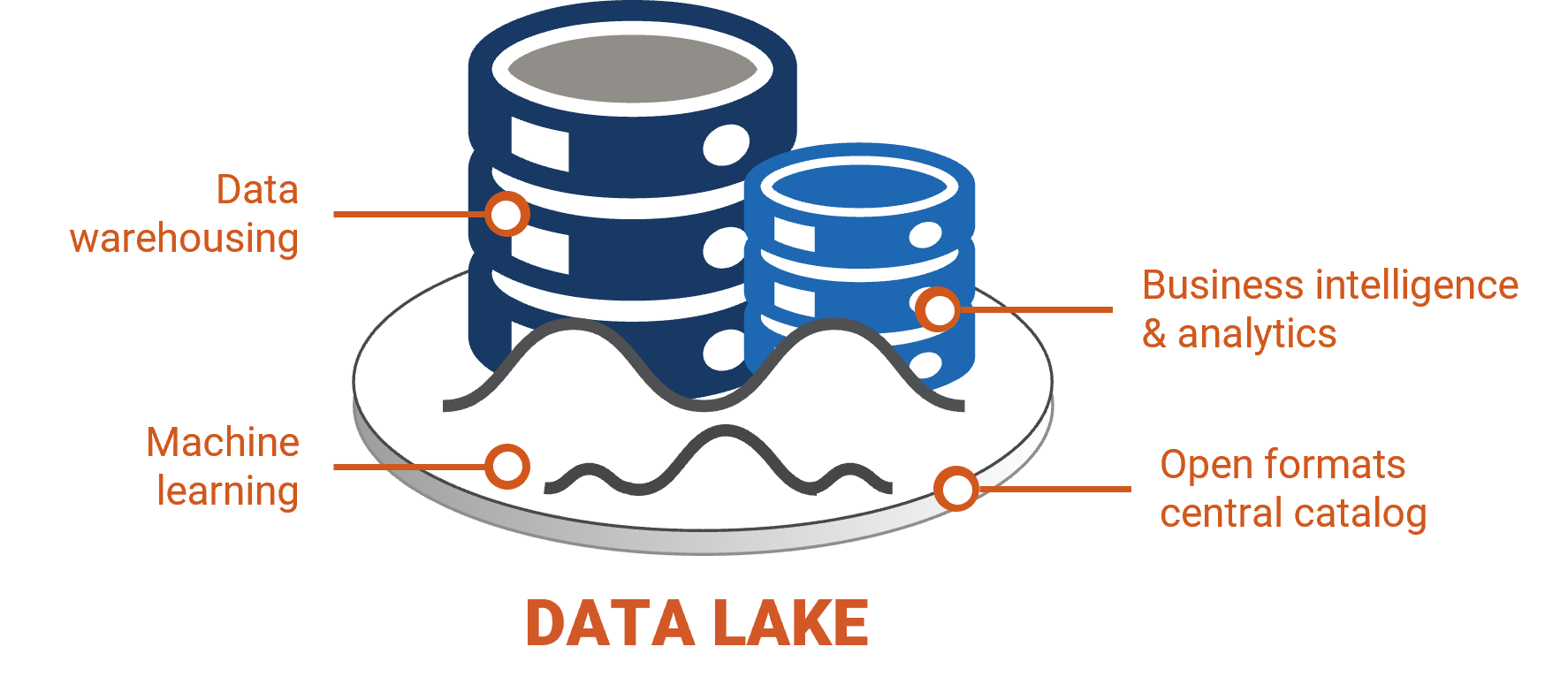3 min read
Validating and Providing a Roadmap for AvMet’s AWS Environment
In today’s fast-paced digital landscape, having a strong and scalable cloud architecture is crucial for long-term...
Product News & Updates
Joining Forces, Department of Defense, and Department of Education Announce New Actions to Support Military Children with Disabilities: Mindex's Role
Latest Customer Story: Building a Scalable Data Architecture for Spraye’s Growth
.png?width=340&height=60&name=8cda0b58-762f-4aaf-a665-2c382dfa7eae%20(2).png)
A data lake is a centralized repository that allows you to store all your structured, semi-structured, and unstructured data at any scale. You can store your data as-is (without having to first structure the data) and run different types of analytics—from dashboards and visualizations to big data processing, real-time analytics, and machine learning to guide better decisions.

Source: *Aberdeen: Angling for Insight in Today’s Data Lake, Michael Lock, SVP Analytics and Business Intelligence
Data lakes allow companies to store all structured, unstructured, and semi-structured data in a single repository. It makes it easier to consolidate data from multiple sources, including combining data from data warehouses with non-structured data. This process allows organizations to scale data of any size while saving time defining data structures, schema, and transformations.
As an organization's data needs grow, the data lake can easily be scaled up to accommodate the increased demand. This scalability helps organizations avoid costly upgrades and manual migrations that would otherwise be necessary when dealing with traditional storage systems. Additionally, a data lake can be used to store large amounts of data without the need for expensive hardware or software. This makes it an ideal solution for organizations that need to store large amounts of data without breaking the bank.
Your organization doesn't have to wait for its IT staff to help you access its data. Data lakes allow you to manage massive amounts of various types of data in a unified, secure, and compliant way. This way, employees can access relevant operational data without being hindered by siloed applications. With a data lake, multiple systems and locations can easily be accessed by all teams, streamlining processes.
With data lakes, you can store data without converting the schema or transforming it. Unprocessed data is malleable, allowing for quick analysis. You can run various types of analytical queries directly from your data lakes, from dashboards to visualizations to big data processing, including real-time data analytics and machine learning.
Data Lakes allow organizations to generate different types of data insights, including reporting on historical data and machine learning, where models are built to forecast likely outcomes and suggest a wide range of prescribed actions to achieve optimal results.
Store your data securely in standard formats to ensure data privacy and security. Additionally, our cloud team can enable role-based access controls to ensure your organization’s data are in the right hands.
Many organizations need more bandwidth to build and maintain a modern data lake. In this regard, cloud experts like ourselves at Mindex can assist organizations in building and deploying data lakes quickly, thereby restoring time and resources that would otherwise be devoted to building data lakes.
![]()
![]()

![]()
![]()
As we prepare to create a data lake, we first collaborate with you and your internal stakeholders to understand your data and its impact on your organization. These conversations help us pinpoint important data to collect and store in your data lake. We utilize this valuable information to ensure we can build a cost-effective, secure, scalable, and durable data lake to push your organization forward.
Once we understand your data, we can acquire it from various sources unique to your organization and store it in a data lake. The data can be acquired through various methods, including database migrations, APIs, batch processes, and streaming processes. We have extensive experience using AWS Glue, AWS EMR, Spark, AWS DMS, AWS Lambda, and many more AWS ETL and analytical tools that allow us to move your data securely and efficiently.
Cleaning and preparing data is an important step in the data lake building process. It involves removing any errors, inconsistencies or duplicates from the data, and preparing it for analysis. Cataloging the data helps you keep track of what data is stored in the data lake, and makes it easier to find and access the data you need. We will ensure that your data is stored in a format that optimizess performance and cost.
We understand that data security and privacy are critical concerns when building a data lake. Leveraging our security expertise, we will configure and enforce security and compliance policies to ensure that your data is protected and meets all relevant regulations. Our team can configure secure access control to ensure that each member of your organization has access to the data they need.
Once your data lake is formed, we can create data models, build reports and dashboards using Amazon Quicksight, and integrate with data analysis tools to provide insights into your data. In addition, AWS Sagemaker and other AI/ML tools can be used to generate data-driven decisions that drive business value and innovation. In some cases, we may rely on a purpose-built data warehousing solution to power analytics at scale.
Nov 19, 2024 by Mindex
In today’s fast-paced digital landscape, having a strong and scalable cloud architecture is crucial for long-term...
Nov 8, 2024 by Mindex
During their evening awards ceremony this week, the Rochester Chamber of Commerce announced the rankings for the 2024...
Oct 30, 2024 by Mindex
ROCHESTER, NY – October 30, 2024 – Mindex, a leading provider of enterprise software development and cloud services,...
AWS has the most serverless options for your data analytics in the cloud, including options for data warehousing, big data analytics, real-time data, data integration, and more. AWS manages your organization's underlying infrastructure so you can focus solely on your application.
AWS analytics services leverage proven machine learning (ML) and natural language capabilities to help you gain deeper and faster insights from your organization's data.
The AWS Cloud enables customers to overcome the challenge of connecting to and extracting data from APIs, streaming data, on-prem databases, or file-based sources in order to aggregate and analyze your data at near infinite scale.
AWS analytics services offer a range of analytics use cases, including interactive analysis, big data processing, data warehousing, real-time analytics, operational analytics, dashboards, and visualizations.
By leveraging data-driven real-time analytics instead of intuition or guesswork, you can make more informed decisions.
AWS-powered data lakes, supported by the unmatched availability of Amazon S3, can handle the scale, agility, and flexibility required to combine different data and analytics approaches. Build and store your data lakes on AWS to gain deeper insights than traditional data silos and data warehouses allow.